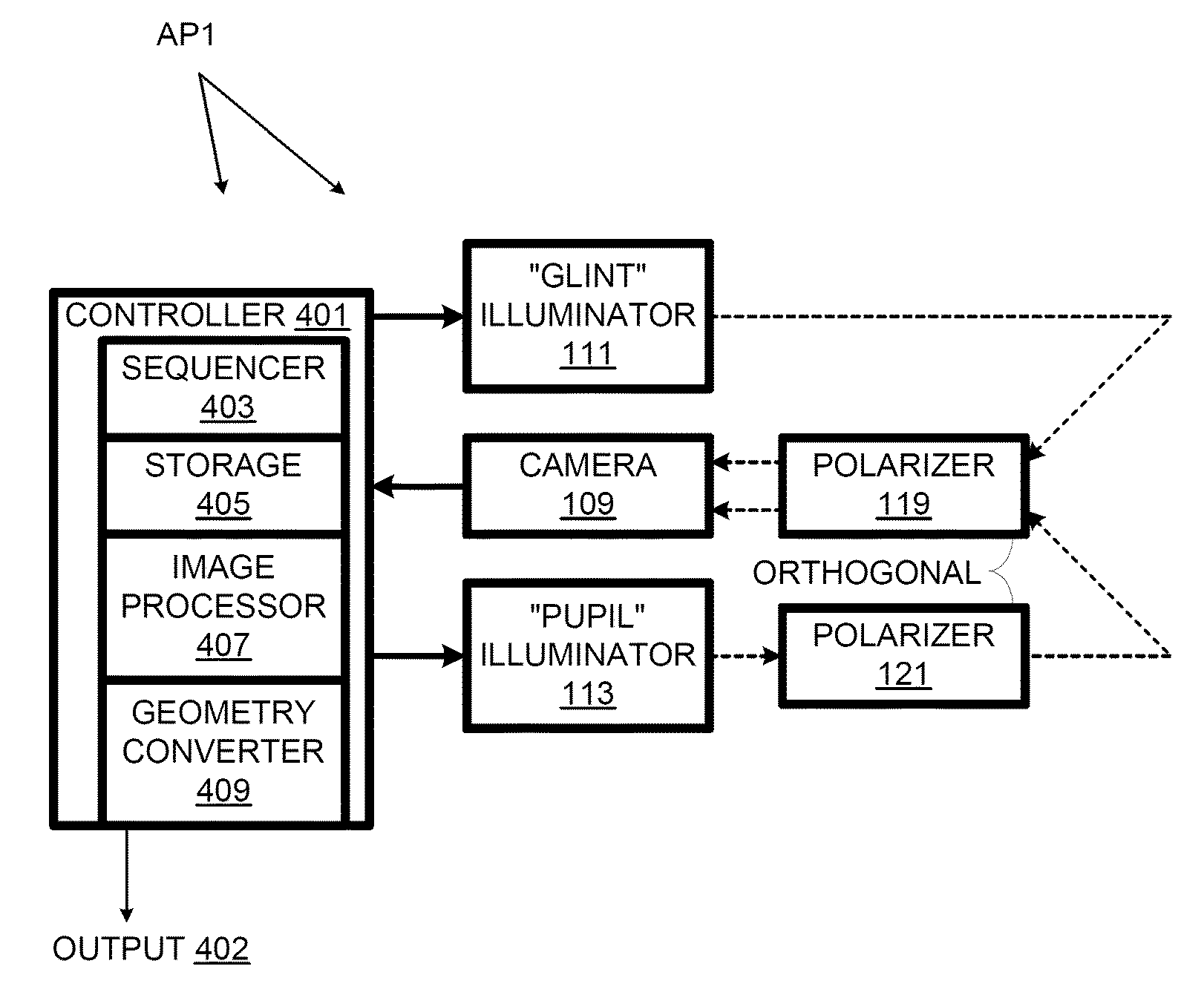Gaze Point Tracking Using Polarized Light
a technology of polarized light and point tracking, applied in the field of polarized light, can solve problems such as excessive brightness, and achieve the effects of preventing overexposure, accurate determination of center and centroids, and stable and accurate determination of user's gaze targ
- Summary
- Abstract
- Description
- Claims
- Application Information
AI Technical Summary
Benefits of technology
Problems solved by technology
Method used
Image
Examples
Embodiment Construction
[0019]FIG. 1 is a view of a user 101 interacting with a computer system 100 according to one embodiment of the current invention. System 100 includes a display 103 and a gaze-tracking system 105 for tracking the motion of user eye 107. Gaze-tracking system 105 includes a camera 109, a “glint” illuminator 111, and a “pupil” illuminator 113. Illuminators 111 and 113 include respective LED arrays 115 and 117, which both emit infra-red light invisible to eye 107 but detectable by camera 109. Illuminator 113 is sufficiently bright that it can overcome ambient light.
[0020]Camera 109 includes a near infra-red (NIR) filter 110 to block visible light, diminishing interference in the camera images from ambient sources of light. LED arrays 115 and 117 illuminate the eye from below with NIR light. In alternative embodiments, visible light is used to illuminate, the illuminators are not below eye level, and exposures are varied in the camera.
[0021]Camera 109 includes a polarizing filter 119 moun...
PUM
 Login to View More
Login to View More Abstract
Description
Claims
Application Information
 Login to View More
Login to View More - R&D
- Intellectual Property
- Life Sciences
- Materials
- Tech Scout
- Unparalleled Data Quality
- Higher Quality Content
- 60% Fewer Hallucinations
Browse by: Latest US Patents, China's latest patents, Technical Efficacy Thesaurus, Application Domain, Technology Topic, Popular Technical Reports.
© 2025 PatSnap. All rights reserved.Legal|Privacy policy|Modern Slavery Act Transparency Statement|Sitemap|About US| Contact US: help@patsnap.com



